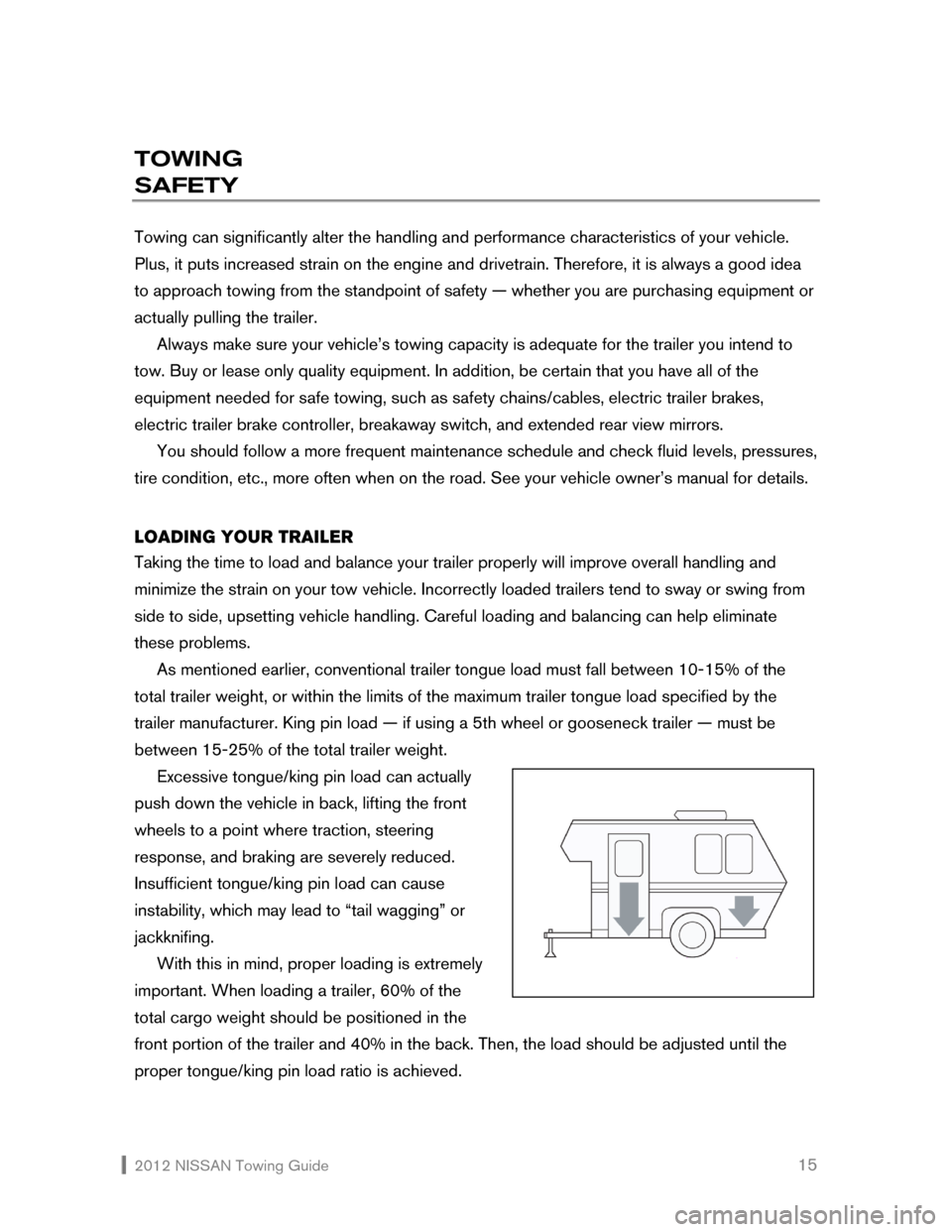2012 NISSAN Towing Guide 15
TOWING
SAFETY
Towing can significantly alter the handling and performance characteristics of your vehicle.
Plus, it puts increased strain on the engine and drivetrain. Therefore, it is always a good idea
to approach towing from the standpoint of safety — whether you are purchasing equipment or
actually pulling the trailer.
Always make sure your vehicle’s towing capacity is adequate for the trailer you intend to
tow. Buy or lease only quality equipment. In addition, be certain that you have all of the
equipment needed for safe towing, such as safety chains/cables, electric trailer brakes,
electric trailer brake controller, breakaway switch, and extended rear view mirrors.
You should follow a more frequent maintenance schedule and check fluid levels, pressures,
tire condition, etc., more often when on the road. See your vehicle owner’s manual for details.
LOADING YOUR TRAILER
Taking the time to load and balance your trailer properly will improve overall handling and
minimize the strain on your tow vehicle. Incorrectly loaded trailers tend to sway or swing from
side to side, upsetting vehicle handling. Careful loading and balancing can help eliminate
these problems.
As mentioned earlier, conventional trailer tongue load must fall between 10-15% of the
total trailer weight, or within the limits of the maximum trailer tongue load specified by the
trailer manufacturer. King pin load — if using a 5th wheel or gooseneck trailer — must be
between 15-25% of the total trailer weight.
Excessive tongue/king pin load can actually
push down the vehicle in back, lifting the front
wheels to a point where traction, steering
response, and braking are severely reduced.
Insufficient tongue/king pin load can cause
instability, which may lead to “tail wagging” or
jackknifing.
With this in mind, proper loading is extremely
important. When loading a trailer, 60% of the
total cargo weight should be positioned in the
front portion of the trailer and 40% in the back. Then, the load should be adjusted until the
proper tongue/king pin load ratio is achieved.
